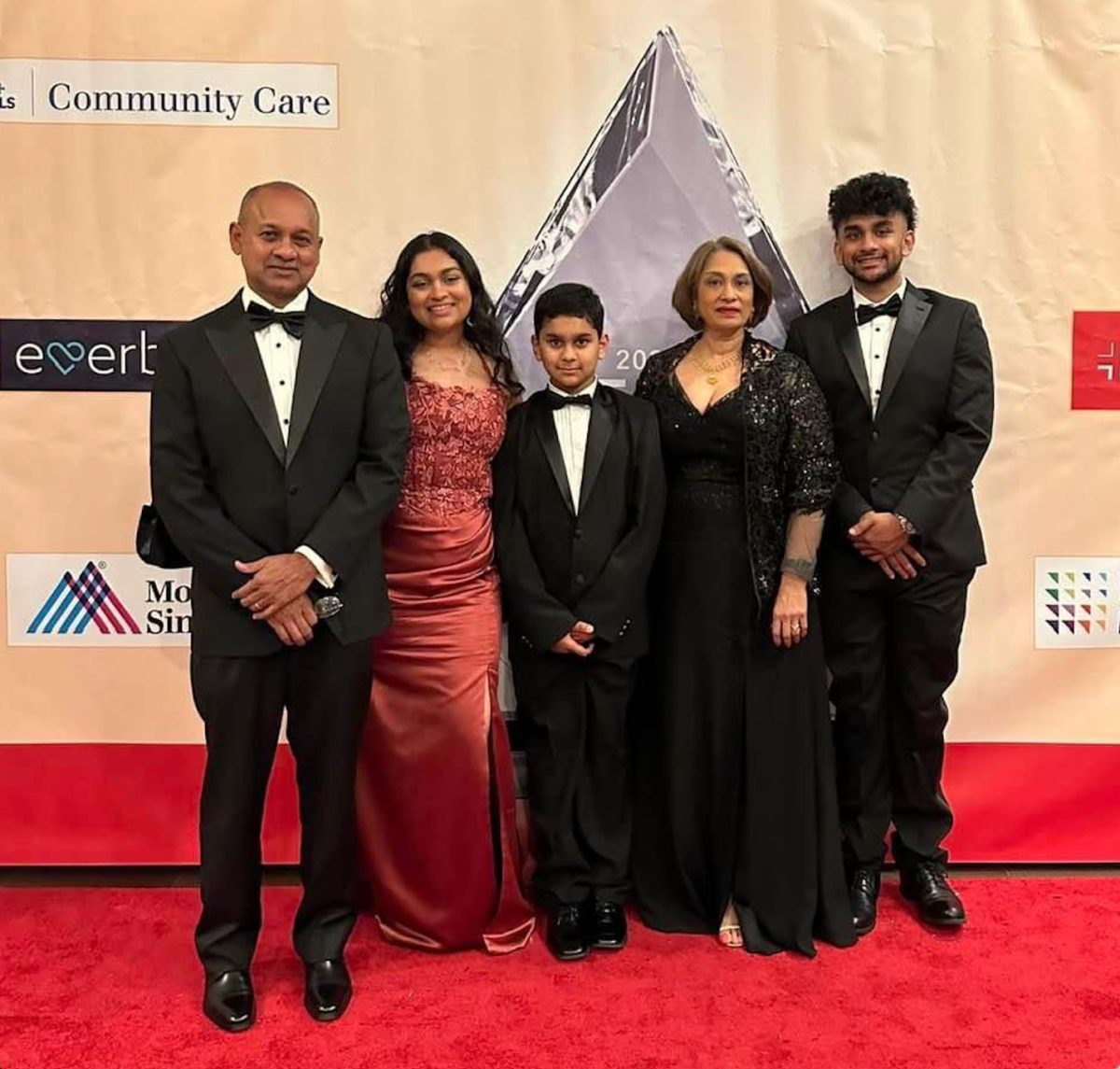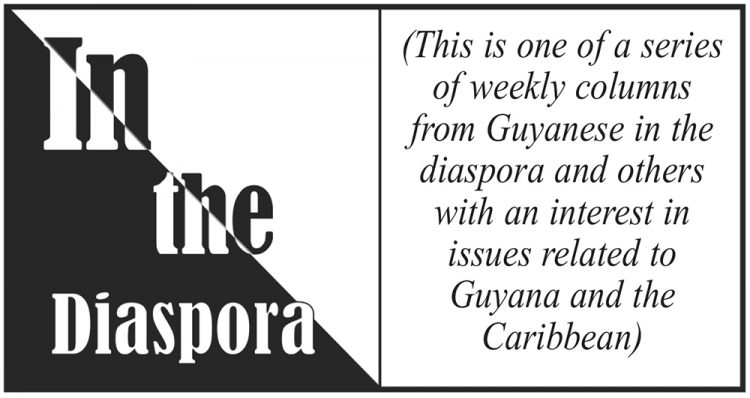On Saturday last, Guyanese scientist Vidia (Bobin, a nickname he got from his uncle who was a tailor) Roopchand, who hails from Wakenaam, was one of one 29 awardees at the 2024 awards organised and hosted by the RESET Talk Show, a platform and weekly broadcast out of New York. Roopchand was being recognised for his contributions to the development of Pfizer’s most recent viral vaccine, the RSV vaccine, Abrysvo. This was his second RESET Award; in 2023, he was honoured for his contribution to the development of the Pfizer COVID-19 vaccine. Thanking JR Giddings (JRG Entertainment) and the awards committee for the honour, Bobin Roopchand underscored that “vaccine development is a team effort, which subsumes multiple areas of expertise and cross functional teams, and I would be honoured to accept this year’s award on behalf of the Pfizer RSV vaccine team.” This week’s column carries his reflections on what this work has meant for him.
Here is my story.
I have been working in vaccine research and development at the Pfizer, Pearl River site for more than 30 years, starting with the polio vaccine and more recently the COVID 19 vaccine and the RSV vaccine, Abrysvo.
That Pearl River site has a very rich history for its contribution to global public health dating back to 1906, when a former New York City health commissioner, Dr. Ernst Lederie, bought a horse farm to make antisera to diphtheria toxin, and over the last almost 120 years, successive generations of scientists have added to the legacy of Dr. Ernst Lederle!
That site has contributed to the development of multiple vaccines of global importance, including the polio vaccine (Orimune), the meningitis vaccine (HiBTiter) which was the first glycoconjugate vaccine, the Prevnar vaccine also a glycoconjugate, the COVID 19 vaccine, the first m-RNA vaccine, and more recently, the pentavalent meningitis vaccine, Penbraya and the RSV vaccine, Abrysvo. Pretty impressive for a horse farm!
To be part of something as consequential as the global effort to mitigate and eradicate infectious diseases has truly been a very fulfilling experience for me.
When I was growing up in rural Guyana, the devastation caused by infectious diseases was very evident in the local population, especially among young children. I have witnessed the devastation caused by polio, otitis media (what we call running ears in Guyana), meningitis, pneumonia and a host of other infectious diseases including gastroenteritis caused by rotavirus. Between 1962 and 1963 there were 485 cases of paralytic polio in Guyana, and I have heard the horror stories of what happened in my village during that epidemic. The last case of paralytic polio in the Americas was in Peru in 1991, and the Americas was declared polio free in 1994.
Incidentally, the last case of smallpox in the Americas was in Brazil in 1971, and the world was declared smallpox free in 1980, which I think is the most significant milestone in global public health.
I was born in 1967 and there were children a few years ahead of me who had been crippled by polio, so I have seen the devastation firsthand, and I also remember the havoc that rotavirus used to cause in the 70s and 80s. Thankfully, two rotavirus vaccines were licensed in 2006, so rotavirus is no longer the problem that it used to be when I was growing up in Guyana.
When I got the opportunity to work in a vaccine development organization, called Lederie-Praxis Biologicals at the time, and to specifically work with the polio vaccine and the RSV and rotavirus vaccine candidates, it felt like destiny was beckoning, it felt like something that I was born to do.
But that is only part of the story.
In the early 1990s, polio was still a problem in Africa. There used to be around 75,000 cases of paralytic polio per year in Africa in the early 90s. This was not due to a shortage of polio vaccines; it was due to inadequate refrigeration facilities for storage and distribution of the vaccine, because the Oral Polio Vaccine has to be kept refrigerated. This meant that remote villages in Africa which lacked refrigeration were at a serious disadvantage when it came to getting the polio vaccine.
This all started to change in 1996 when the late great South Africa leader Nelson Mandela launched the “Kick Polio out of Africa” movement. He was able to get vaccine manufacturers, funding organizations, Rotary International, NGOs and governments to work together to create a network of cold storage and distributions centers all around Africa, and that resulted in Africa being declared “Wild Polio Free” in 2020!
At the launch of the “Kick Polio Out of Africa” initiative in 1996, Mr. Mandela spoke at a soccer match where he emphasised that a unified effort, across all sectors of society would be needed to end polio in Africa. He said, “Only unified efforts which galvanize whole societies towards these goals, will succeed in kicking this virus, that looks so much like a football, out of Africa and, eventually, out of the world.”
The idea that entire societies could be engaged, almost conscripted, to prodigiously combat infectious disease resonated with me. It awakened a sense of purpose and conviction, and it has galvanized and sustained me since then.
In 2003, Mr. Mandela or Madiba, as they call him in South Africa, said something that only served to reinforce my sense of purpose and conviction: “Life or death for a young child too often depends on whether he or she is born in a country where vaccines are available or not.”
That is how I became a vaccine researcher, found my sense of purpose and conviction, and those are the sources of my inspiration and passion for vaccine development, my childhood experiences of witnessing the devastation caused by infectious diseases in Guyana, and the speeches of Madiba, in which he encouraged the engagement of entire societies in the cause for vaccination programs.
Whenever Madiba spoke about equity in global childhood vaccination programs, it always felt like he was issuing a mandate directly to me and I have tried my best to comply and over the last 30 years I have always approached my role with a sense of responsibility.
There is still a lot more that needs to be done in order to improve global vaccine rates, and the number of children in the world who are unvaccinated is still very high (what we refer to as “zero-dose”). Since 2019, there has been a dramatic increase in the number of zero-dose children globally due to COVID-19 disruptions, increased economic crises and conflict, and declines in vaccine confidence. In 2021 alone, there were 18.2 million children who did not receive the first dose of the DTP vaccine, which protects against diphtheria, tetanus, and pertussis. That is the kind of thing that keeps me up at night.
Now that the first M-RNA vaccine has been approved, I think that we have just witnessed one of those watershed events in biomedical innovation. It is very similar to what happened in 1978, when it was first demonstrated that recombinant human insulin could be produced in bacteria; recombinant human insulin was first approved by the FDA in 1982. That development spawned the entire global biotechnology industry and resulted in at least 239 biotech medicines being approved for human use. I think that something similar could happen with M-RNA technology, especially if it is supplemented by Genera-tive AI to design more effective vaccines and therapeutics. That combination of M-RNA technology and Generative AI could potentially be very transformative for modern medicine.
My contribution to global public health is not the result of my efforts only. It is also the product of everyone who has had input in my life, including my parents, grandparents, my wife, kids, my mother-in-law, the people of my village, my friends, my teachers at Sans Souci Metho-dist School, Anna Regina Multilateral School, and the University of Guyana. I would like to take a minute to acknowledge those giants who defined the Che-mistry Department at the University of Guyana – Dr. George Walcott, Dr. Halvidar Singh, Dr. Neville Trotz, Dr. Winston Tinto, Ms. Jackie Joseph, Mr. Malcolm Bunbury, and Mr. Everall Franklin, all of whom had tremendous input in my undergraduate education. The synthesis of the key chemical compounds in the production of the COVID-19 vaccine was all concepts I had learned from Chemistry 401 heterocyclic chemistry, and that curriculum was created at the University of Guyana by Dr. Walcott, Dr. Halvidar Singh and Dr. Neville Trotz.
I also want to thank the faculty at the New York Medical College in the Immunology Department and the faculty at Columbia University in the Chemical Engineering department, and of course all my colleagues at Pfizer.
Finally, and more than anything else, this honour is a resounding recognition of the Caribbean’s contribution to global public health.


